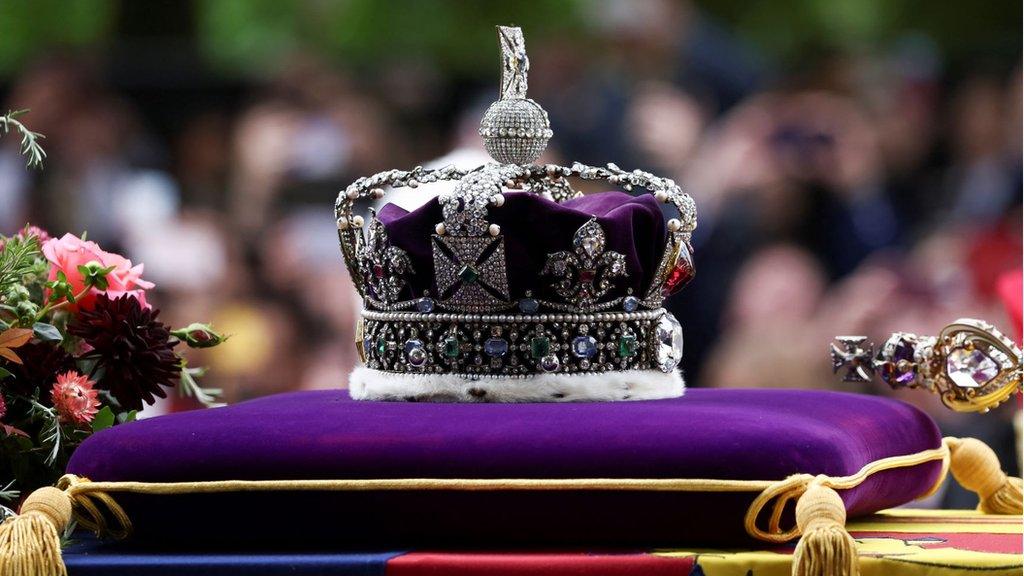St Edward's Crown leaves Tower of London ahead of Coronation
- Published
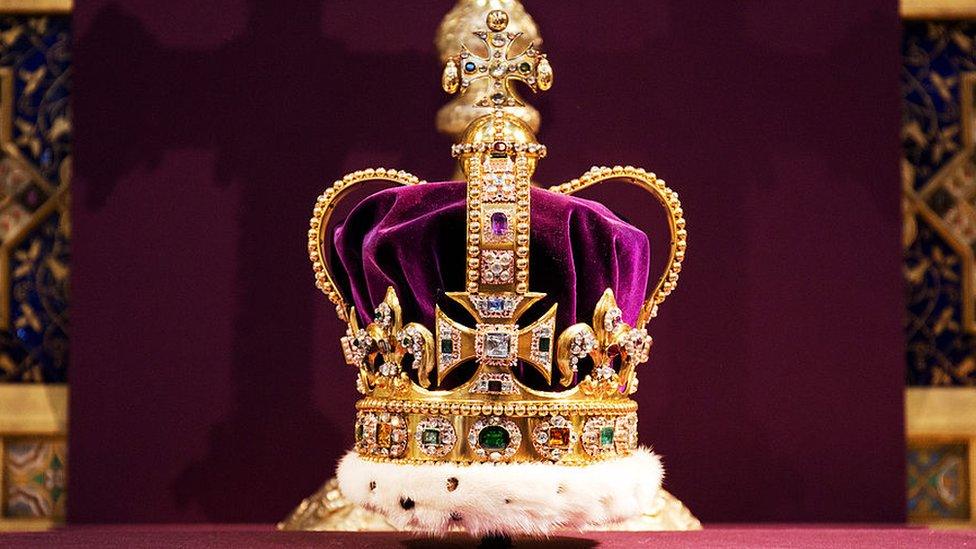
The movement of the crown was kept a closely guarded secret
The St Edward's Crown has been removed from the Tower of London to be resized for the King ahead of the Coronation.
The historic centrepiece of the Crown Jewels was taken away to allow for its modification before the ceremony on 6 May, Buckingham Palace said.
The movement of the crown was kept secret until its safe delivery. Its current location has not been divulged.
A version of it has been used during the coronations of English and British monarchs since the 13th Century.
This St Edward's Crown was made for King Charles II in 1661, as a replacement for the medieval crown that was melted down after the execution of his father in 1649.
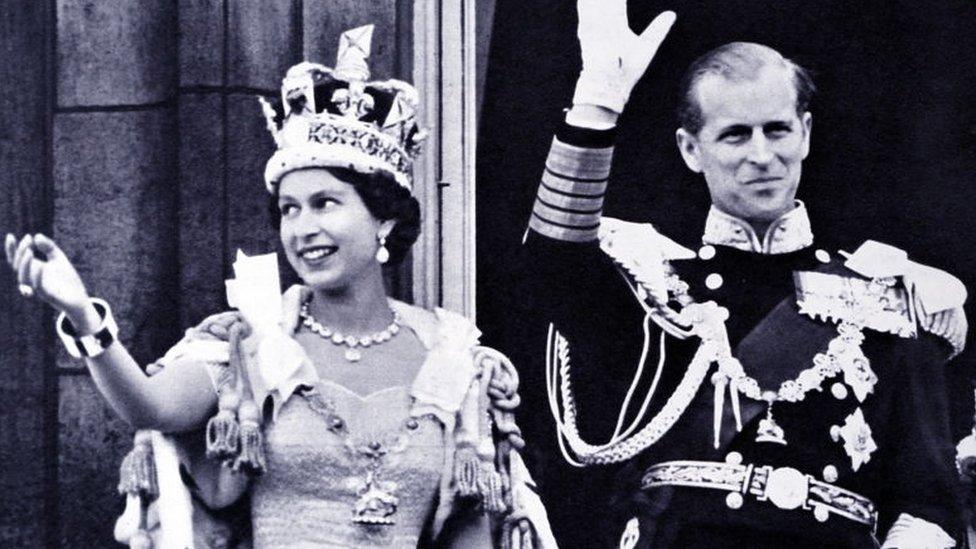
The crown was last used by Queen Elizabeth II in 1953
The original is thought to date back to Edward the Confessor, the 11th Century royal saint who was the penultimate Anglo-Saxon king of England.
It is the 1661 St Edward's Crown that appears in the royal coat of arms of the United Kingdom, the Royal Mail logo and in badges of the British armed forces.
In a statement on Saturday, Buckingham Palace said: "St Edward's Crown, the historic centrepiece of the Crown Jewels, has been removed from the Tower of London to allow for modification work to begin ahead of the Coronation on Saturday 6 May 2023."
The ceremony will take place in Westminster Abbey, eight months after the monarch's accession and the death of Queen Elizabeth II.
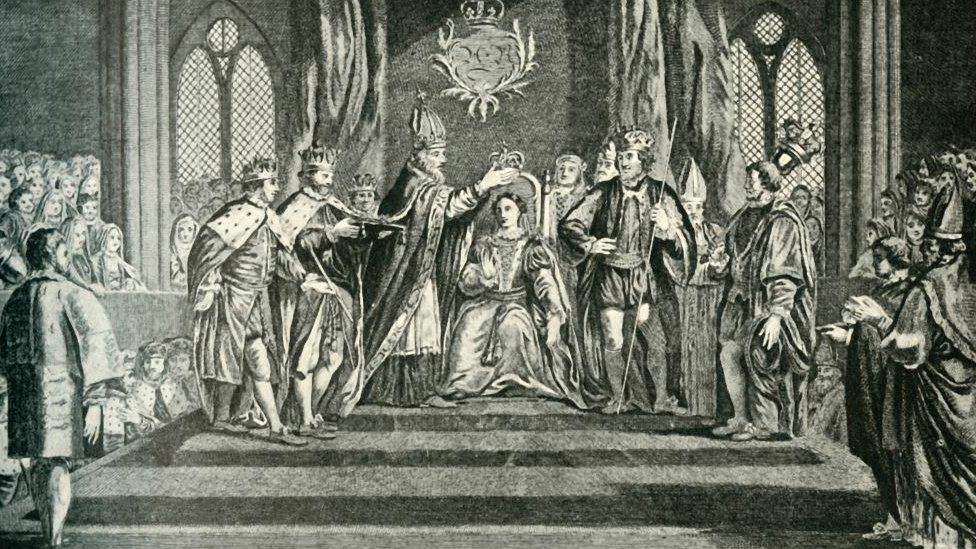
On one unusual occasion, at Westminster Abbey in 1533, the medieval St Edward's Crown was used to crown a Queen Consort, Anne Boleyn
It is understood the ceremony will include the same core elements of the traditional service, which has retained a similar structure for more than 1,000 years, while also recognising the spirit of 21st Century Britain.
However, the Coronation is expected to be on a smaller scale and shorter, with suggestions that it could last just an hour - Queen Elizabeth II's lasted about three hours.
It is also expected to be more inclusive of multi-faith Britain than in the past, but will nonetheless be an Anglican service, with the Queen Consort being crowned alongside Charles III.
Guest numbers will be reduced from the some 8,000 of 1953 to about 2,000, with peers expected to wear suits and dresses instead of ceremonial robes, and a number of rituals, such as the presentation of gold ingots, not being performed.
- Published2 May 2023
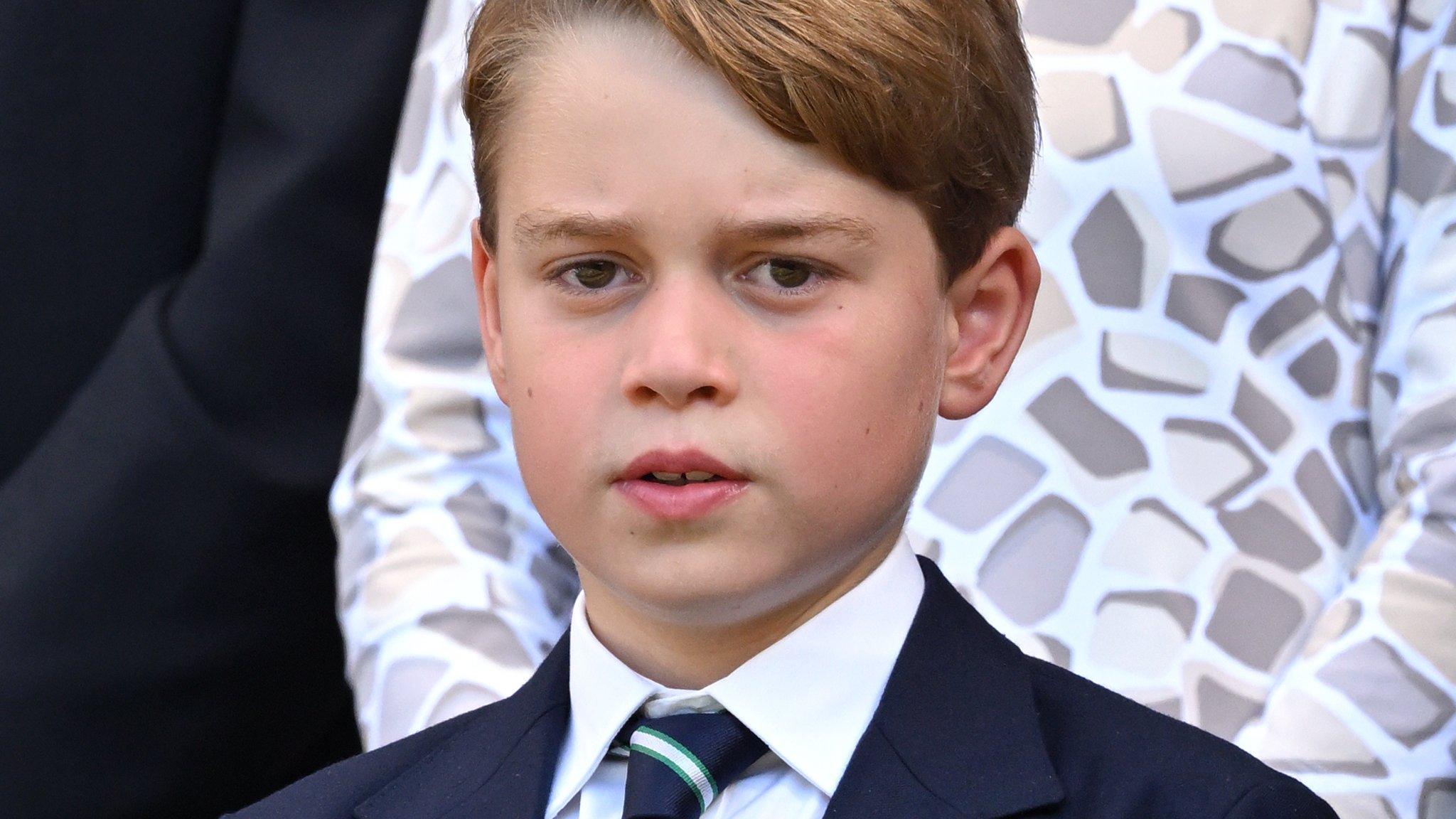
- Published11 October 2022
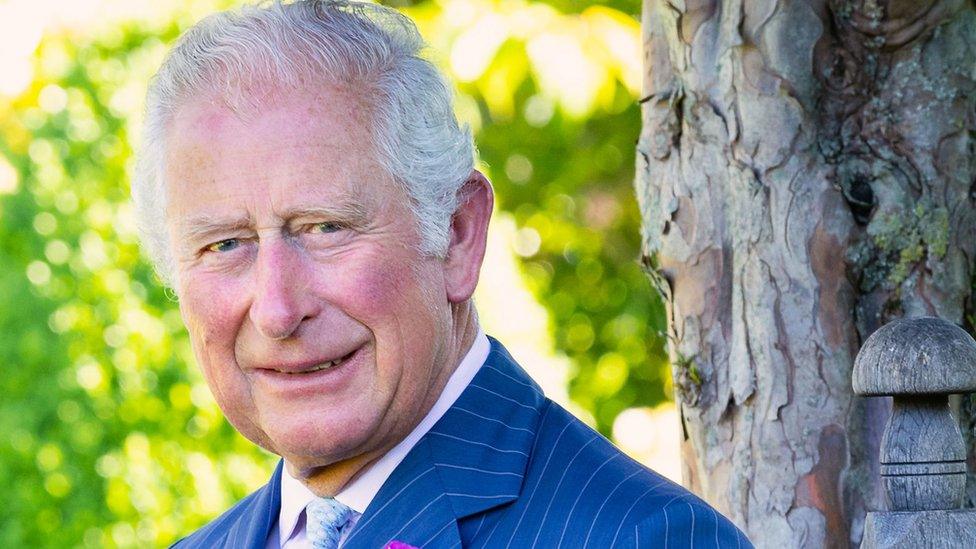
- Published19 September 2022
